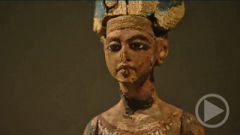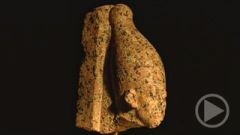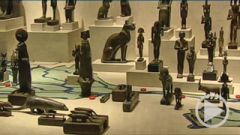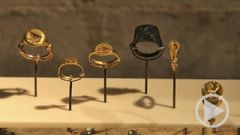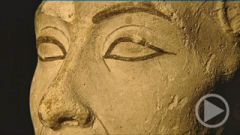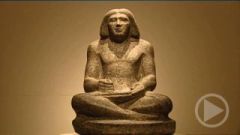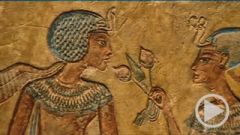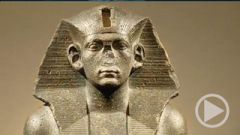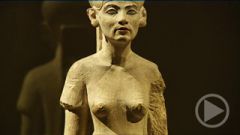- Home
- »
- Germany
- »
- Berlin
- »
- Museum Island
- »
- The Berlin Egyptian Museum
- »
- The Berlin Egyptian Museum - Tomb Relief
Tomb Relief
Tomb Relief
This limestone relief is from the tomb of Seshem-nofer near the great pyramids of Giza. The two horizontal strips, or registers, show part of the process of harvesting grain. Top left, we see the winnowed grain being sieved and lying in a flat heap. Next to it, straw is being piled up using wooden pitchforks.
On the left of the lower register, a bulging sack full of grain is being secured with cord, ready to be transported by donkey. However, there's a problem with the haulage arrangements. In the centre of the picture, two men are trying to budge a stubborn donkey, obviously with little success. The small group of donkeys on the right also seems to be running out of control. One of them is trying to escape and head over to the left. With sticks raised high, two men are trying to contain the animals.
In Old Kingdom tombs from the period between 2,600 and 2,200 BC, there are hundreds of similarly vivid scenes of everyday life in Ancient Egypt. They capture the fleeting nature of a dramatic moment in an image that can be replayed at will – surrounding the deceased with everything that had happened in his or her life on earth. But these farming scenes have another purpose – they were meant to ensure that the deceased had a never-ending supply of sustenance to help him on his journey through the afterlife.


